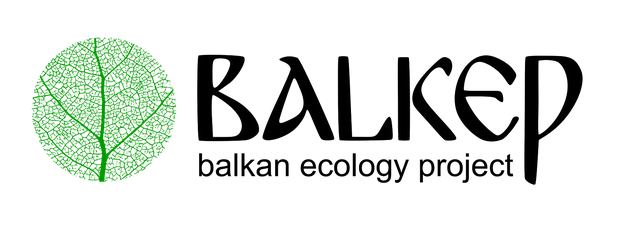Welcome to Gardens Around the World a series where I’ll be sharing observations and thoughts about gardens I have visited around the world.
During this post, we’ll take a look at Hakgala Botanical Garden in Sri Lanka, probably the most beautiful garden I’ve ever had the pleasure to visit. We’ll cover the garden’s history, layout, unique features and some basic visiting info
Brief History of the Garden
The history of the garden intertwines a tale of colonial ambition, botanical exploration, and a commitment to biodiversity conservation. In the year 1861 the British colonial administration initiated the establishment of the Hakgala Botanical Garden as an experimental station for cultivating Cinchona trees. Cinchona pubescens and Cinchona ledgeriana were vital medicinal plants at the time, producing the alkaloid quinine—the primary treatment for malaria that was running rampant among the European colonizers as they spread throughout the tropics.
As the economic viability of tea cultivation became apparent, the garden's focus underwent a pivotal shift and transformed from a solely medicinal purpose towards a broader botanical mission. Subtropical and temperate plant life from across the globe found a welcoming haven within its verdant embrace, transforming the landscape into a tapestry of exotic blooms and towering conifers.
As the 20th century unfolded, the garden's narrative became further enriched by a captivating confluence of cultural influences and this harmonious juxtaposition mirrored the unique cultural tapestry of Sri Lanka itself, a testament to the island nation's diverse heritage.
Recognizing the perilous encroachment of deforestation upon Sri Lanka's natural treasures, the Hakgala Botanical Garden emerged as a stalwart champion of conservation. Today, the garden stands as a beacon of hope in safeguarding our planet's fragile biodiversity.
Garden Layout
Situated at an elevation of about 1745 m above sea level, Hakgala Botanic Gardens, about 28 hectares in extent, lie under the shadow of the Hakgala Rock
(meaning “Elephant’s jaw rock”). This massive rock towers to a height of about 2,200m behind the gardens and the surrounding forest reserve like a solitary giant.
The gardens take the shape of several terraces upon the lower slopes of the rock and face the Uva Valley, across which some magnificent views of the Madulsima and the Namunukula range of mountains are seen in the distant landscape.
The climate of the Gardens is subtropical but can feel cool, fresh due to altitude and has a lowest recorded temperature of 3° C. The gardens receive rainfall from two monsoons. The South West from May to August and the North East from October to December, the annual average rainfall being about 2300 mm.
The flora of the gardens is distinctly sub tropical and consists of representatives of the indigenous, montane flora intermingled with those introduced from other subtropical countries, systematically planted in various sections of the gardens.
My favorite part of the garden is the old tea plantation on the higher ground in the garden that has since transitioned into an arboretum. The winding stone pathways, less manicured approach to maintenance and well established ground cover give the area a fairy tale like appearance and mood.
The Rock Garden was another breath taking section of the garden. Home to a variety of plants that grow in rocky environments this area provides an excellent example of layering potential when working in subtropical climate with abundant water supply.
Regenerative Landscape Design - Online Interactive Course
Want to learn how to design, build and manage regenerative landscapes? Join us on our Regenerative Landscape Design - Online Interactive Course. We look forward to providing you with the confidence, inspiration, and opportunity to design, build and manage regenerative landscapes, gardens, and farms that produce food and other resources for humans while enhancing biodiversity.
You can access the course material at anytime and join the live sessions and interactive forums that run from May - Oct every year. All members of the Bloom Room receive a 500 EUR discount. To take up this offer all you have to do is become an annual subscribers to our Substack and register here with the promo code BLOOM.
I look forward to you joining !
Unique Features
Monkeys - Veer off the main pathways a little and you are likely to meet the Toque macaque - Macaca sinica climbing through the trees or sitting on the grass. The Toque Macaque , also known as Rilawa, is an Old World monkey endemic to Sri Lanka. Their crowning feature is a whorl of hair resembling a toque cap, which gives them their name. These adaptable primates can live in various forests, even up to 2100 meters depending on the subspecies.
Some Toque Macaques have learned to live alongside humans, occasionally raiding crops and garbage. Three subspecies exist: the Dry-zone Toque Macaque found in drier regions, the Wet-zone Toque Macaque inhabiting wetter areas, and the Highland Toque Macaque residing in the central highlands. They breed once a year, typically between July and September, with a gestation period of around 5-6 months. Offspring reach sexual maturity around 5-7 years old. You’ll most likely to find a troop of these monkeys around the picnic/restaurant area.
Water - The water flow has been designed perfectly both in terms of aesthetic and function. Everywhere you walk you are a pebbles throw away from a meandering stream that provides an assuring sense of comfort and calm as the water flows into various bodies, well appreciated by local amphibians, birds and aquatic plants.
There’s a small area of the garden that focuses of temperate herbs including Melissa officinalis - Lemon balm, Origanum vulgare - Pot Marjoram, Rosmarinus officinalis - Rosemary, Salvia officinalis - Sage , Satureja montana - Winter Savory , Tanacetum vulgare - Tansy and Thymus sp. - Narrow Leaved Thyme.
Welcome to our Online Store where you can find Forest Garden/ Permaculture plants, seeds, bulbs, and Polyculture multi-packs along with digital goods and services such as Online Courses, Webinars and eBooks. We hope you enjoy the store and find something you like. It's your purchases that keep our Project going.
You can also find our full list of trees. shrubs and herbs for forest gardens on our nursery website.
Plants of Interest
One of my favorite plants in the garden is the prehistoric looking, native to Sri Lanka, Cyathea crinita - Tree Fern that you will find dotted around the garden but concentrated within the excellent Fernery section of the garden.
This plant is probably one of the oldest on the planet with some fossil records dating back millions of years. Unfortunately, this beautiful fern is endangered due to habitat loss and overcollection
Monterey Cypress - Cupressus macrocarpa - I was surprised to see so many of these trees in the garden but they evidently appreciate the climate. Cupressus macrocarpa only exist naturally in two small pockets along the Central Coast of California but are grown widely around the world. There are many beautiful specimens in the garden coated with moss and reaching high into sky.
Special Area of Interests and Research
For lovers of Rosa spp. there is a Rose Garden containing over 300 varieties of roses, from classic red roses to more unusual varieties and the Orchid House has a collection of over 300 species of orchids, including some rare and endangered species.

Overall it was an incredible experience visiting the garden. I would really have appreciated seeing a dedicated section to Ethnobotany, showcasing the traditional uses of plants by local communities and their potential medicinal or other applications. One thing to take care of when walking around the gardens, especially so in the damp areas, are the leeches including the Ceylon Giant Leech - Haemadipsa zeylanica. They are not dangerous and their bites are painless, but they can be unpleasant nonetheless and the bite wound seems to take much longer than you would expect to heal.
Tucking trousers into your socks and wearing above ankle footware should be sufficient in avoiding them but check between your toes when you take your shoes off in any case.
Visiting Details
Opening times - Open every day from 7.30 AM - 6.00 PM
Best time to visit - This breathtaking escape is located just outside Nuwara Eliya, easily accessible for those exploring Sri Lanka's hill country. While the garden is open year-round, the spring season (April-July) is widely considered the best time to witness the vibrant floral displays. During October to December a thick mist envelope the gardens, heavy downpours of rain falls more frequent in the afternoon and evenings.
How to get there
Snacks and Coffee - There is a coffee shop that serves snacks in the garden and picnic areas.
Entrance Fee - 3000 LKR - $9.22 (exchange rate as of Dec 2023)
Website - https://www.botanicgardens.gov.lk/service/botanic-gardens-hakgala/
Email - royalbotanicgardens@yahoo.com
Support Our Project
If you appreciate the work we are doing you can show your support in several ways.
-Become a member of the Bloom Room. A $70 annual subscription to our Substack provides you with access to live sessions, design tutorials, a members forum and more, see details here.
-Make a purchase of plants or seeds from our Nursery or Online Store
-Joining us for one of our Practical Courses or Online Courses
-Comment, like, and share our content on social media.
We offer a diversity of plants and seeds for permaculture, forest gardens, and regenerative landscapes including a range of fruit and nut cultivars. We Deliver all over Europe from Nov - March. - Give a happy plant a happy home :)
Want to learn more about Regenerative Landscape Design? Join The Bloom Room!
The Bloom Room is designed to create a space for more in-depth learning, for sharing projects and ideas, for seeking advice and discovering opportunities.
Ultimately, it aims to build a more intimate, interactive, and actionable relationship between members, a way for the Bloom Room community to support each other’s projects and learning journeys, and to encourage and facilitate the design, build, and management of more regenerative landscapes across our planet.
What you can expect as a member of the Bloom Room
As a member of the Bloom Room you can expect;
Access to an interactive forum where you can ask questions, direct what type of content you would like to see as well as share your own content and projects.
Monthly live session featuring general Q&A and tutorials on design software for creating and presenting polycultures.
Live session every month for members to showcase your projects, plans, designs, and gardens, with guest speakers from the community.
Full Access to all of the content on Substack
500 EURO discount for on our Regenerative Landscape Design - Online Interactive Course.
Future opportunities to join our Global Regenerative Landscape Design and Consultancy Service, with potential roles for those with the will and skill to join our design team.
An opportunity to take part in the group ownership of a Regenerative Landscape. You will find more details on that here.
Become a paid subscriber to our Substack to join. The annual subscription is currently $70 and the monthly subscription is $7 (monthly subscription excludes discounts for products and services) . You can join here, we look forward to meeting you!






















